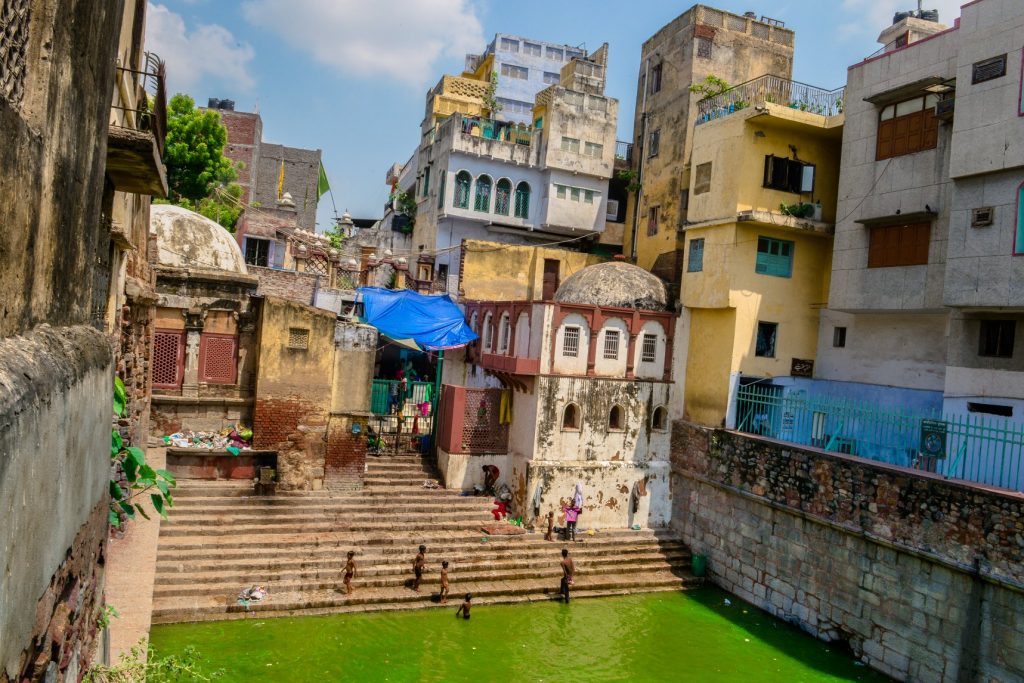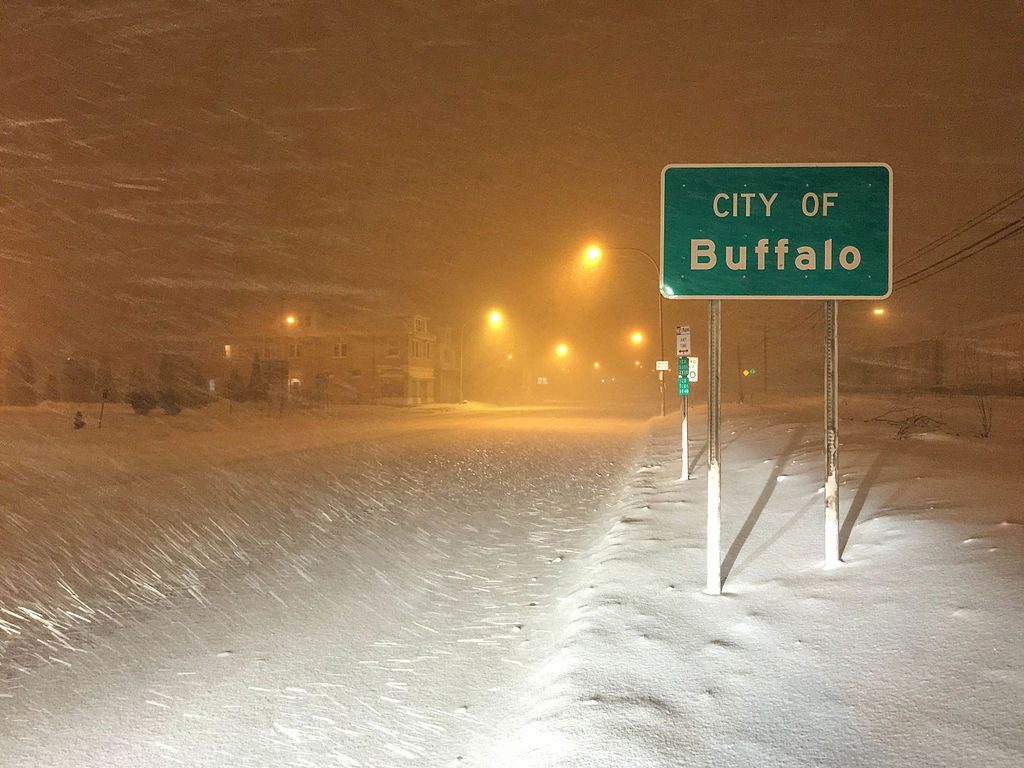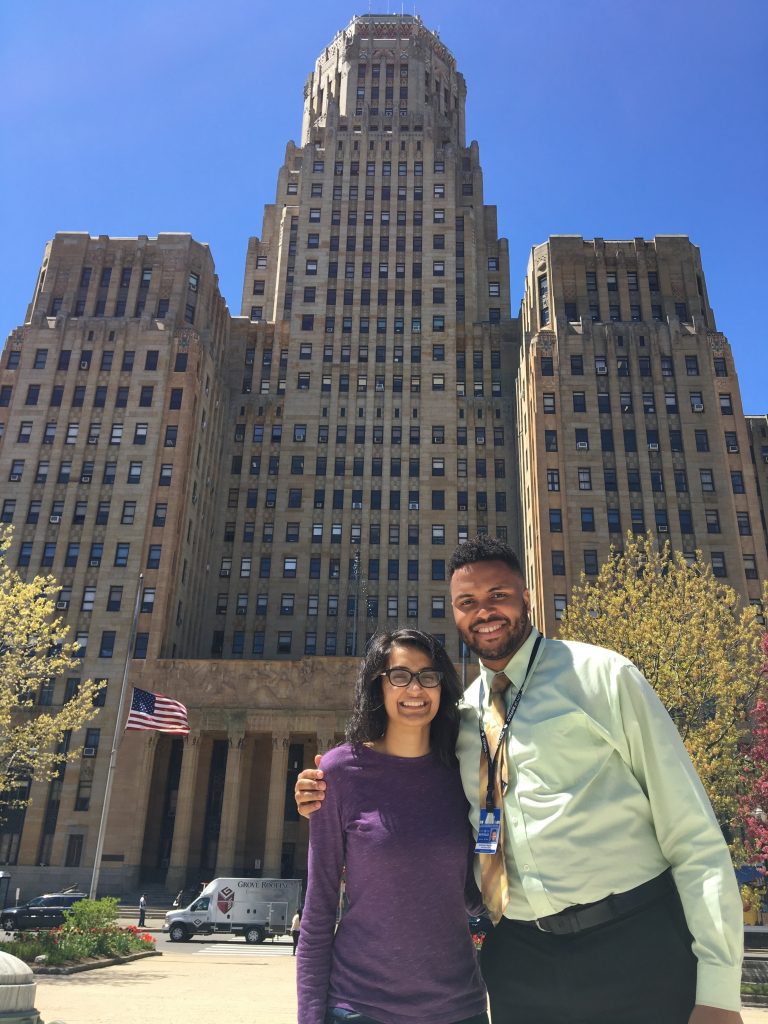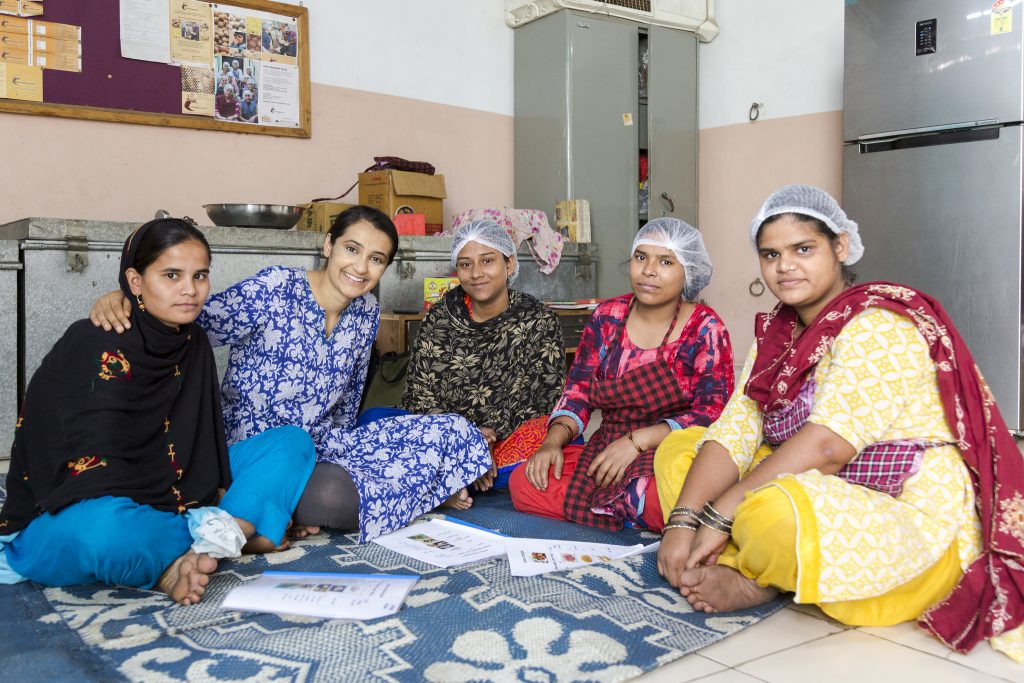
“Ah, darn.”
I shot straight up. I rubbed my eyes with the left hand, reaching my right hand behind my back in search of my phone. Finding it, I brought it to my eyes.
8:15 a.m.
“Ugh,” I thought to myself, “I can probably lie down for another three minutes.”
With that thought, I cascaded back down to my bed, catching a glimpse of the heavy snowfall outside my bedroom window.
It was January and in my hometown of Buffalo, NY, that meant that it was the coldest and one of the most unpleasant months of the year. On this snowy Saturday, my dream for the day was the same as every day until summer: to stay in bed as long as possible.
Unfortunately, that wasn’t happening.
I looked at my phone again: 8:25 a.m. NO!
I threw off my blanket, sprung out of my bed, sprinted my way to the closet, and flipped through my steadily expanding collection of cable-knit sweaters. After throwing at least 12 items of clothing over my shoulders due to my conditioning from too many ’90s comedies, I found the most “it’s-Saturday-but-I’m-also-working” outfit I could.
I grabbed my keys, wallet, jacket, and phone and ran out to the car, very displeased at the three feet of snow that had accumulated on the driveway. Ah, of course. After 16 years of living in Buffalo, I somehow still managed to forget that things, like shoveling your driveway and deicing your car, are part of everyday life, and take extra time.
I started my car, quickly shoveled around my four tires, threw some lukewarm water on my windshield and made peace with the weird looks I was about to receive from fellow drivers for having three feet of snow on the roof of my car.
With that, I (literally) skidded off.
Driving on unpaved snowy roads meant that I would have a lot of time to think during my early morning Saturday journey. I traveled down the NY 33 – a local highway that was expanded in the 1960s to create easier access to the city from the suburbs and cuts straight through an African-American neighborhood. In the process of constructing the 33, an Olmstead-designed, tree-lined parkway that connected all the surrounding neighborhoods was wiped, creating problems for the predominantly African-American community to create convenience for their more affluent white suburban neighbors.
Unfortunately, this sort of redlining is not the only discriminatory housing policy. Buffalo remains one of the most segregated cities in all of America. These ethnic and racial divides are apparent as you walk through the city: South Buffalo is predominantly Irish; the East side is predominantly African-American, and so on.
Despite these deep racial divides, Buffalo—the Rust Belt city once known for its manufacturing and trade—has managed to maintain its charm. In recent years, an insurgence of startups and nonprofits founded by millennials looking to contribute to the city’s renewal and change the narrative.
Buffalonians take deep pride in their city. Tailgating the NFL Buffalo Bills team, driving in three feet of snow with ease, and having the number of your chicken wing place on speed dial are all Buffalo staples. Growing up, it always seemed these shared experiences harbored a sense of belonging and a feeling of home for all Buffalo natives.
I spent my college years getting involved in the Buffalo community and was happy to continue that pursuit with a position in Buffalo City Hall’s Office of Citizen Services as a full-time AmeriCorps VISTA. A bulk of my work revolved around facilitating and serving the community organizations in the city. I realized that it was not the wings, nor the snow and certainly was not the Buffalo Bills that fostered this pride. It was community.

As that Saturday morning confirmed, the sense of community in Buffalo was palpable. When I finally made my way to the East Delvan community center, I was greeted by Ms. Ada, who had been in the kitchen for at least three hours already. Ms. Ada was a lifelong community advocate who had organized hundreds of neighborhood cleanups, breakfasts, and activist-led initiatives. Though she stood at roughly four and a half feet, with long waist-length braids, an unforgettable collection of cable-knit sweaters and a dangerous combination of sassy and sweet, I was both mesmerized and terrified by Ms. Ada. As she made her famous grits, occasionally shouting back orders on how to cut the fruit in front of me, I yawned, thinking about cold it was and how that would affect the attendance at the Masten District Community Breakfast that morning.
Turns out, it would not. One by one, seats filled the community hall and people lined up for grits, bacon, and home fries. More than 80 people trekked across the city in three feet of snow to spend the morning with each other. After breakfast, the room heard from elected officials and community leaders. Masten district residents engaged with a delicate balance of curiosity and skepticism, aware of their responsibility to hold leaders accountable to the community. It was this engaged sense of citizenship that connected me to Buffalo.

Although I proudly ascribe to the title of Buffalonian, it was the same sense of community I was drawn to that became a source of frustration for me. I truly enjoyed facilitating neighborhood interactions and citizen activism, but I never felt like I belonged in it. Most Buffalonians are generationally positioned in the city. I heard my friends’ parents talk about how much the local high school had changed since they were students, or community members talk about a time where Grand Central station was fully functional. These conversations made me acutely aware that I was not from Buffalo. I would always be the Pakistani immigrant that moved to the area roughly a decade ago. It didn’t matter how much I knew about the culture and history of the city. Not participating in or knowing the Easter tradition of visiting the Broadway Market left me feeling that I could never fully be a part of the Buffalo community.
The realization especially pained me because it was already familiar. Growing up as an immigrant, there was always a sense of confusion about my identity. Was I American first or Pakistani first? Do I owe an obligation to America? What aspects of being Pakistani do I keep in my values or in my day-to-day life? Does it matter? Over time, I realized this was an internal debate I would never win. I had to learn that my passport did not define me.
Although I made peace with my identity as an American, I still questioned my identity as a Buffalonian. Over time, it felt like being in a community as deeply rooted in its traditions as Buffalo, this lack of a sense of belonging would be a constant cloud of fear and worry over my head. So, when the first non-Buffalo job opportunity came, I was eager to take it and get some separation from the only place I had known since childhood.
As I navigated the historic, bricked alleyway puzzles in central Delhi, 7,256 miles away, I almost instantly found myself in the same situation: craving community but unsure if it was accessible to me.
The Nizamuddin Basti is an 800-year-old historic settlement in the middle of Delhi, famous for the historic sites – most notably Nizamuddin Dargah, a Sufi shrine. The neighborhood has maintained its rich Islamic history over the years. During the 1947 partition, Nizamuddin Basti served as a safe place for Muslim families to seek. Since then, the settlement has continued to grow as a predominantly Muslim area with most of its residents working in the informal sector.
Casually walking by the final resting place of poets like Mirza Ghalib whom I had heard my parents talk about my whole life, and hearing the smooth Arabic recitation of azaan (the call to prayer) made me feel an instant connection to the Basti. Yet, constantly losing my way through the narrow gallis with my dupatta flopping around my shoulders as I asked for directions in my Americanized Hindi, I couldn’t have felt more like a fraud.
It was the exact opposite of Buffalo. I looked like I could belong but upon further examination, it was clear that I didn’t.
As frustrating as it felt to be the obvious answer to “which one of these things doesn’t belong” again, I did not pay much attention to it. I had accepted that moving across the world at a young age barred me from ever belonging to a community. I thought of my time in the Basti as a really valuable fieldwork experience that would help me understand the challenges faced by low-income urban residents.
Under the premise of work experience, I slowly found myself becoming closer with the women I worked alongside. I silently listened to their stories about a conflict between a difficult sister-in-law over the household cooking schedule, or a nosy neighbor who expressed disapproval of their parenting style. Some conversations were much more difficult to hear: mothers-in-law who were verbally abusive, husbands who were unfaithful, siblings who had become vulnerable to substance abuse.
These conversations—both the fun and the difficult—developed trust and dependence between us. In early spring, I was invited to an anniversary party for one of the members of the group. I eagerly accepted the invitation. I had heard so much about everyone’s homes and families but had never seen them.
A few hours before the party, I paced back and forth in the living room of my flat.
Was my outfit okay? Was I underdressed? Should I wear earrings? Do I even own earrings? What if there is some etiquette that I do not know about? Is this too much? Should I not be going? They are my colleagues, not my family… What if this is too much?
As my mind spiraled out of control about the significance (or lack thereof?) of my first personal visit to the Basti, hours had passed and it was now time for me to leave. I walked in from the Bawli gate entrance. From this entrance, the Basti’s characterization as an urban village was most apparent: Several floors of concrete houses were stacked upon each other with jutting more than others. The smells of freshly grilled kebabs and the shouts of fruit and vegetable sellers drowned out my own thoughts.
I walked through the frenzy of Noor Jahan’s house, the gathering place for all the co-workers before we would make our way to the party. There, I hung out waiting for the rest of the women. All the women who lived in the alleyway were rushing to get ready, yells about borrowing lipsticks, jewelry being pulled from stored boxes, last-minute hair adjustments. Eventually, everyone came and we made our way to the party.
We walked through the Basti and crossed the famous Dargah to get to Shehenaz’s house – the party host. First, we stepped up a narrow windy set of cement stairs, then walked on a steel guided plank to her alleyway, made a right in and stopped at the second house. Next, we climbed three sets of ladders to greet a lovely dressed Shehenaz.
She rushed to serve us some homemade biryani out of a traditional degh (a large steel pot used to cook biryani). We all sat and ate, I occasionally glanced over to make sure I was correctly eating with my hands. After we ate, Fatima—another co-worker—asked me to come to her nephew’s birthday party that evening. Her face lit up with excitement as she talked about the event and I knew I could not say no.
So it was decided, I could stay for the party that would start in four hours and in the meantime I would visit the houses of different co-workers. The hours flowed by as I went from house to house in the Basti, sharing chai at each one. I finally met their in-laws and children I had heard so much about.
As evening approached, I geared up for another small get-together dinner. Much to my surprise, the party was anything but small. Neighbors from all over the Basti lent their talents for a full-on extravaganza. Some came with deghs ready to cook 12 (yes, 12!) kilos of biryani, others brought dessert, one neighbor brought a speaker system and disco balls. The party was set in the central space of a larger alleyway in the Basti. Neighbors joined in from all four corners, the elders sat in plastic chairs, the little ones ran around occasionally getting yelled at for running too fast. I watched in amazement and pure wonder as three teenagers danced to “Despacito” by Luis Fonsi and Justin Bieber on top of a 14th-century tomb.
It was incredible to see community members coming together, sharing the limited resources they had to celebrate one of their own in a way that was inclusive of everyone in the community. I felt thankful to be there.
As the gratitude overtook me, another feeling crept it. One that was vaguely familiar and unpleasant. One that made me both nostalgic for early-morning community breakfasts in snowy Buffalo and served as a reminder that I was leaving India in a little over three months at that time.
The Basti was just going to be another Buffalo – a place where I will only be temporary, I thought. I was spiraling again. Ah man, how I do manage to do this? I feel so connected to a place and crave to be a part of the community and then I just leave? I’m never going to find a place that my family has been settled in – does that mean I’ll never find a community? Does it have to be that way?
My brain froze there. Perhaps due to the silence caused by a change in DJ or more likely because my brain might have exploded if I kept on that line of thought.
I eventually got my answer, though. The next three months flew by and it seemed like I became closer with the community every day. I went to more parties, shared more laughs, and received more cleaning and cooking tips. In all this, I realized that I had an opportunity to change my perception about community. It was an opportunity to not make the same mistake as I did in Buffalo.

I could continue torturing myself by questioning my place and fixating on the fact that I was not born close by, or I could accept that those factors do not stop me from feeling connected to a community.
I wholeheartedly chose the latter and have not looked back. Allowing myself to not be so guarded, to share, to be vulnerable, to celebrate, to support those around me has been the most relieving experience of my life. If my passport does not define me, then neither does my current address. Community is transcendent. It is perhaps the only privilege that we have access to that is not defined by a border, ID, fees, membership limits, eligibility requirements. There are no limits to how many communities you can belong to. Community is with you long after you have left a physical location.
Some snowy Buffalo Saturday, I hope to devour Ms. Ada’s grits, and on some crisp Delhi afternoon, I hope to lick my fingers clean after eating Basti biryani. Until then, I plan to shower everyone around me with the love that my communities have shown me.
A previous version of this article was originally published on 7/26/2018 on American India Foundation. AIF’s William J. Clinton Fellowship for Service in India builds the next generation of leaders committed to lasting change for underprivileged communities across India while strengthening the civil sector.




